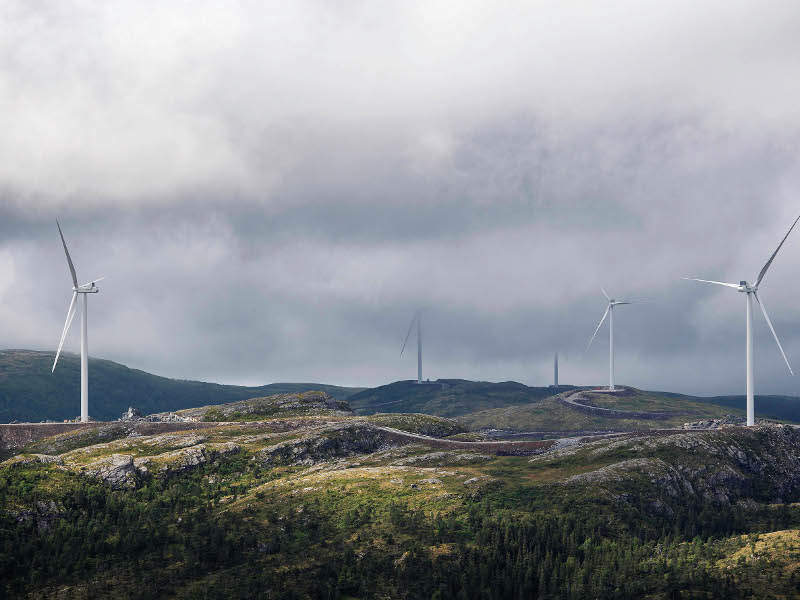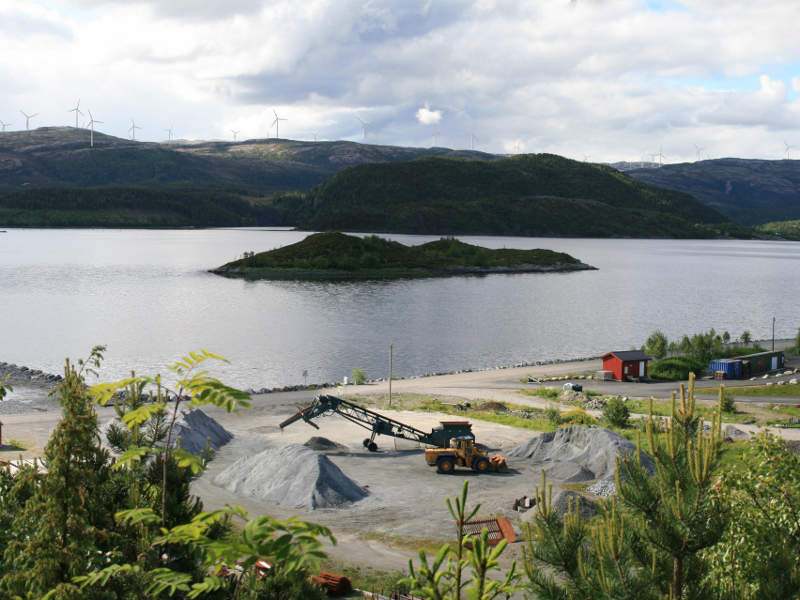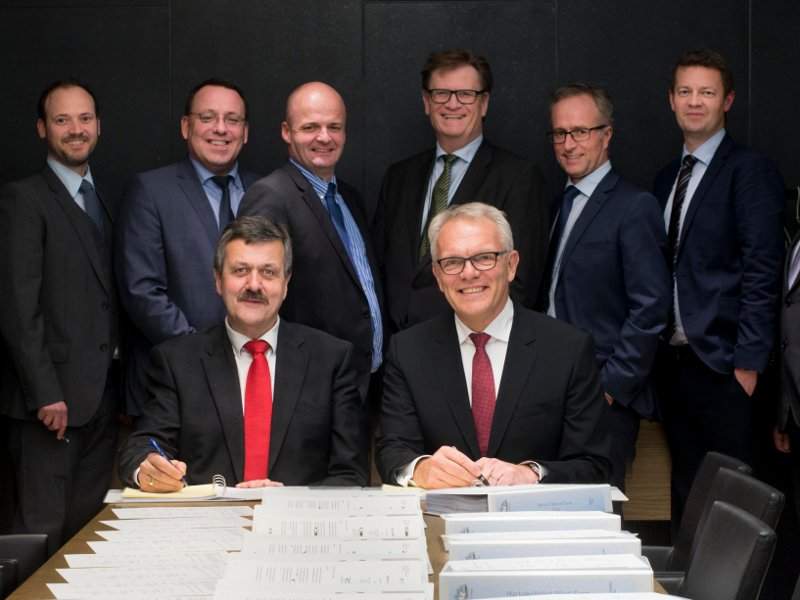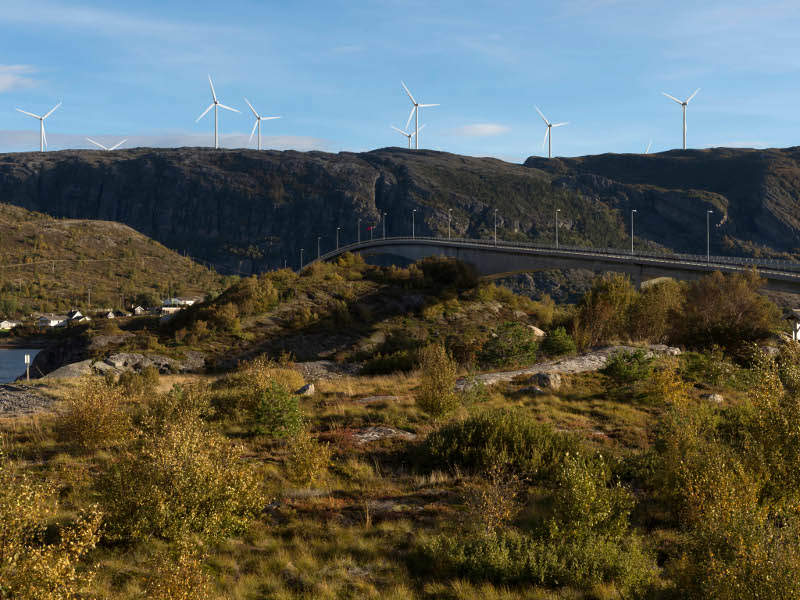Fosen Vind project is a 1,000MW onshore windpower project being developed in the Trøndelag County of Central Norway. Encompassing the development of six windfarms, it is considered to be the largest onshore windpower project in Europe.
The project is being developed by Fosen Vind, a joint venture of TrønderEnergi, Statkraft, and Nordic Wind Power. Statkraft, which holds a majority 52.1% interest in the project, is responsible for the project execution, while Nordic Wind Power and TrønderEnergi hold 40% and 7.9% stakes, respectively.
Construction on the project started after making the final investment decision in February 2016. Roan, the first windfarm of the project, is expected to be commissioned by the end of 2018, while the remaining five windfarms are anticipated to commence operations in 2020.
The €1.1bn ($1.3bn) wind project is expected to generate 3.4TWh of clean energy a year, which will be sufficient to power approximately 170,000 Norwegian households.
Fosen Vind project turbine details
The Fosen Vind power project will be equipped with 248 Vestas V117-3.45MW wind turbines and 30 V112-3.45MW turbines, with a rated capacity of 3.6MW each.
The three-blade V117-3.45MW wind turbine will have a rotor diameter of 117m and a swept area of 10,751m². With a 112m rotor diameter, the V112-3.45MW turbine has a swept area of 9,852m².
Each blade of the V117 wind turbine is 57.2m-long, while the blade length of the V112 turbine is 54.7m. The two turbine variants have cut-in and cut-out wind speeds of 3m/s and 25m/s, respectively.
Fosen Vind wind project location and make-up
The project portfolio includes Roan (255.6MW), Storheia (288MW), Geitfjellet (154.8MW), Harbaksfjellet (108MW), Hitra 2 (93.6MW), and Kvenndalsfjellet (100.8MW) windfarms.
Located in the municipality of Roan in Sør-Trøndelag County, the Roan windfarm will be equipped with 71 Vestas V117-3.6MW turbines with a hub height of 87m. Construction of the windfarm began in April 2016 and turbine installation was completed in August 2018. It is expected to begin operations by the end of 2018.
Storheia is the biggest windfarm of the portfolio and the second one to enter the construction phase. It is being developed approximately 5km south of Årnes in Åfjord and will consist of 80 wind turbines with a total generating capacity of 288MW.
Hitra II windfarm will include 26 wind turbines erected on Eldsfjellet plateau on Hitra Island in Sør-Trøndelag. Wind turbines at Storheia and Hitra 2 are proposed to be installed by mid-2019, with operations expected to commence in 2020.
The Kvenndalsfjellet windfarm will be located approximately 6km north-west of Årnes in the municipality of Åfjord, and will feature 27 turbines. The Harbaksfjellet windfarm will be located approximately 13km north of Årnes in the municipality of Åfjord, while the Geitfjellet windfarm will be located in the municipality of Snillfjord.
The Harbaksfjellet and Geitfjellet windfarms will consist of 30 and 43 turbines with a rotor diameter of 117m and 136m, respectively.
Financing
Nordic Wind Power has secured €228m ($264m) in long-term project financing for the Fosen Vind project from SEB commercial bank and Danish export credit agency EKF.
SEB is providing €76m ($88m), while EKF is providing the remaining €152m ($176m).
Off-take and transmission of power from Fosen Vind
Fosen Vind has reached an agreement with Norsk Hydro for an annual supply of between 0.6TWh and 1TWh of electricity from the project from 2020 to 2039.
The electricity generated by the project will be transmitted to the national grid through a new 420kV transmission line from Namsos to Trollheim, passing through Fosen.
Statnett is the developer of the transmission line, which includes two segments, namely Namsos-Storheia and Storheia-Trollheim.
Contractors involved
Vestas was awarded the contract for the supply of wind turbines for the Norwegian wind project.
Peikko Norge has supplied rock anchor foundations for Roan, Storheia, and Hitra 2 windfarms.
Johs J Syltern was awarded the contract for the construction of Roan, Geitfjellet, Kvenndalsfjellet, and Harbaksfjellet windfarms, while Stjern Entreprenør was sub-contracted for conducting technical assembly of steel components and casting works of the turbine foundations.
Blue Water was engaged to conduct port services in Esbjerg, sea freight and port services in Monstad, and trucking to site for the Roan wind project.
Linka was contracted for electro-technical works at Roan. It subcontracted Nexans for the supply of approximately 200km TSLF 36kV underground cable to interlink the turbines and transmit power to the grid.
Fosen Vind has engaged Multiconsult as the owner’s engineer for the project, while the clean energy business of Wood Group, previously known as SgurrEnergy, was engaged for conducting power performance testing (PPT) on the project.
Trønderske Line Partner and GrunnPartner are providing network connections to the Hitra 2 windfarm, while Veidekke Entreprenør is delivering infrastructure facilities at Storheia.
Fosen Vind awarded PEAB the construction contract for the Hitra windfarm, which includes the construction of a 12km road, 26 wind turbine foundations, and other infrastructure for Hitra 2 windfarm.







